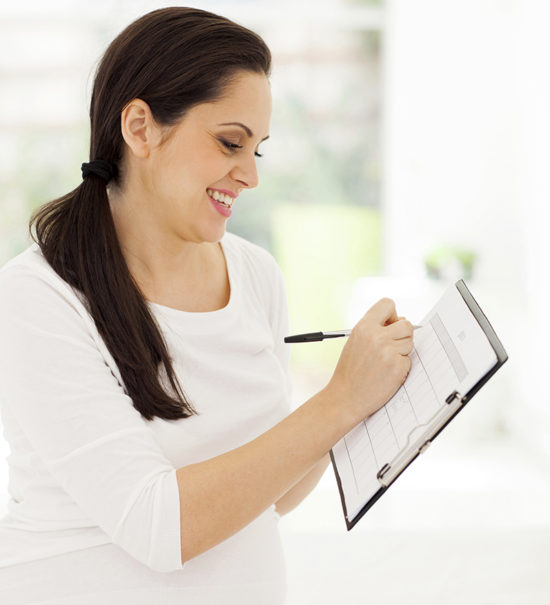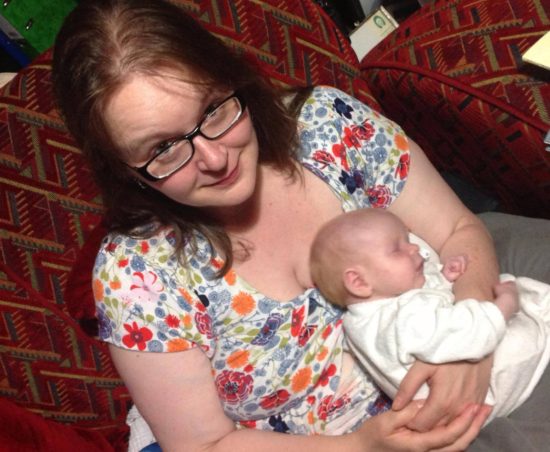We look at birth plans – what they are and why they can be useful as you prepare for labour

During your pregnancy, a useful way of preparing for labour is to consider writing a birth plan. This is a written record of what you would like to happen during your labour and birth, and what you would like to avoid.
It can help you think through your feelings about labour, your options including pain relief and choice of birth place, and the different scenarios you might face.
It’s important to keep in mind that when it comes to labour nothing is set in stone. NCT Antenatal Teacher Lucy Markes says: “Try not to be too rigid as labour and birth are unpredictable. Some women call their birth plan a “birth preference” or “birth wish list”.

NCT member Vee Kay agrees: “On our NCT Facebook page a lot of people say not to call it a birth plan to avoid disappointment if it doesn’t go according to the plan”.
As your pregnancy progresses, your thoughts and feelings about birth might also change. In week six of pregnancy you might be all set for a hospital birth but by week 24 you might be considering your home birth options. Let your birth wish-list evolve and think in terms of a plan A, B and C!
As Liz Urie, an NCT member, says: “It’s important not to get fixated on a ‘birth plan’. Once you get to the birth, the most important thing is what’s best for you and your baby.”
The Better Births report from the National Maternity Review in England recommends: ‘Every woman should develop a personalised care plan, with her midwife and other health professionals, which sets out her decisions about her care, reflects her wider health needs and is kept up to date as her pregnancy progresses’.
Reviewing your birth preferences with your midwife during antenatal appointments can help you feel more confident about labour and birth. It’s also a useful tool for talking through your preferences with other healthcare professionals you might meet during your pregnancy and labour.
This is important as the Better Birth report says that women should be able to make decisions about the support they need during birth and where they would prefer to give birth, whether this is at home, in a midwifery unit or in an obstetric unit, after full discussion of the benefits and risks associated with each option.
Your birth preferences will be personal to you but it can help to consider a list of points. Don’t worry if you don’t feel like writing it all down.
Birth plan templates
Bullet points are fine or you can use a ready-made template from your midwife or the internet (see box).
Gather as much information as you can before starting. This can be through your midwife, antenatal classes, trusted sources of online or written information or talking to friends and family.
People in your area can be particularly helpful as they will have direct experience of local services, such as a home birth, the local birth centre or midwife-led unit, and hospital. Ask them what they found useful and whether they have any tips based on what they know.
Remember to keep at least one copy for yourself and put one in your maternity notes. Having it to hand can be particularly helpful for new healthcare professionals that you meet during your labour and birth.
It’s important to talk through your birth preferences with your partner (and any other birth companions), as they may end up speaking on your behalf during labour.
NCT member Joanna James, mum to Holly and Oscar now seven and five, says, “I discussed my birth plan with my partner and my mother who were present at different stages of my first birth. My mum was amazing.

“When the anaesthetist seemingly couldn’t understand why I was deliberating over an epidural and I was mid contraction and unable to speak, she was able to explain clearly what my thoughts were”.
Discussing your birth wish list with your partner can also help raise any concerns or questions either of you have – and give you the chance to address them. This will hopefully help you both feel more confident as labour approaches.
Preparing for all eventualities can help you cope with the unexpected, or if the healthcare professionals involved in your labour recommend a course of action which is not what you hoped for.

“Don’t be disappointed if labour doesn’t go the way you want. Just do what you can,” advises Sarah Lewis, an NCT member from Brighton & Hove branch and mum to Wynnifred, three years (pictured).
There may not be much time to weigh up the pros and cons if an unplanned procedure is needed so it helps to have thought through different scenarios, such as an assisted birth or having an emergency caesarean. This is when it’s particularly important that your partner understands – and can communicate – what your wishes are.
Above all, try and keep an open mind about your labour and take time to think through all of your options and different scenarios. Hopefully, this will help you feel more confident when the time comes – whatever happens.
Visit NCT’s website for more information about birth
Call NCT’s helpline 0300 330 0700 for practical and emotional support in all areas of pregnancy, birth and early parenthood including help with feeding.